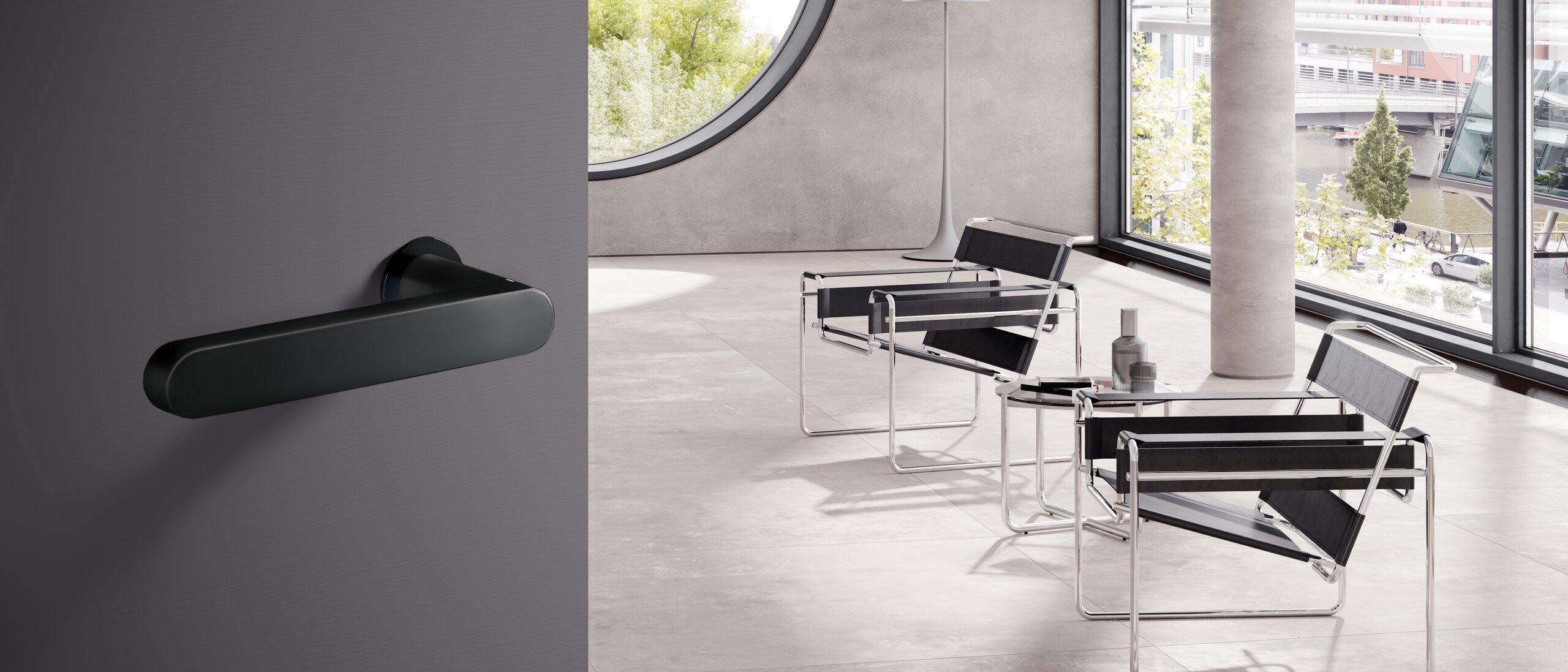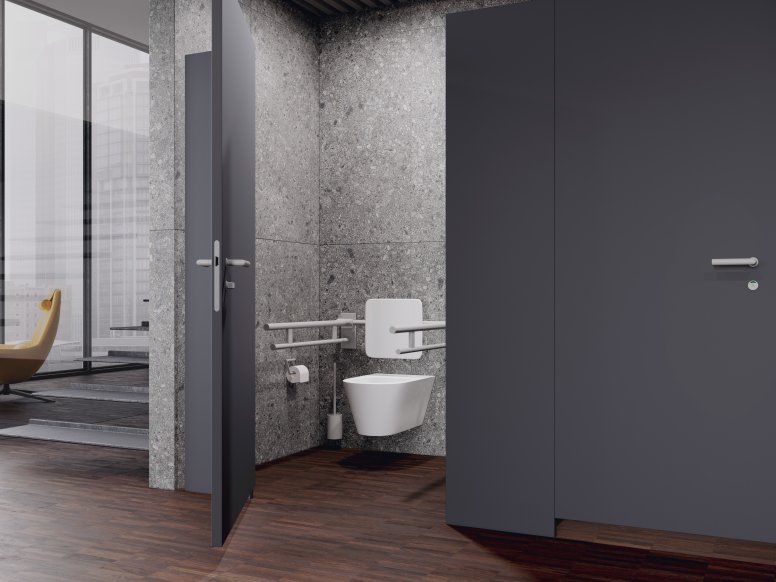HEWI MAG / NEWS
Door handle design: discover the power of the surface
Have you ever noticed that we get an impression of a room even before we enter it? It may sound insignificant but this is where the visual and haptic qualities of the door handle play a decisive role, i.e. what we see and what we feel. Follow us on a haptic journey at the door.
The role of door handle design in the first impression of a room
One of the smallest design elements is also one of the essential components of an entire architectural plan, because design attitude is also expressed in smallest of things. It’s the details that count. Door handles are not just purely functional elements with which doors are opened or closed.
They come in many shapes, with different surfaces and in different colours. The design of a door handle opens up a wide range of design possibilities that all too often go unused. Whether the handle is a harmonious part of the whole or is deliberately placed in formal opposition to the ensemble: It always stands in the design context of the room.
Lever handle design: Surfaces with effect
- Stainless Steel
- Polyamide
- Matt surface
- Glass
- Wood
1. Stainless steel surface
Metal has an elevated appearance and timeless elegance that most plastics cannot match. The surface can be ground and polished, blasted, buffed or brushed, each with a different look.
The typical grey colour can be changed by painting over or colouring the stainless steel surface. Chemical, mechanical and manual manufacturing processes make every stainless steel door handle an expression of quality and finish.
Stainless steel is highly resistant to corrosion, impacts and scratches. At the same time, stainless steel has a pleasant feel that varies depending on the treatment of the surface. Usually, stainless steel fittings feel somewhat cool. But with a special surface treatment, it is also possible to change the feel to something softer without significantly changing the typical stainless steel look.
Stainless steel is available in different quality grades, each of which have different longevities. The chrome content plays an important role. It is between 17 and 19 percent. Other components of stainless steel are iron, nickel, molybdenum, vanadium or manganese.
For a frequently used element such as the door handle, stainless steel is a high-quality option that users will enjoy for many years. Those who value architectural design will be happy to see the HEWI Series 270 fittings designed by Hadi Teherani. The design of this door handle series is characterised by clear lines and perfect balance.
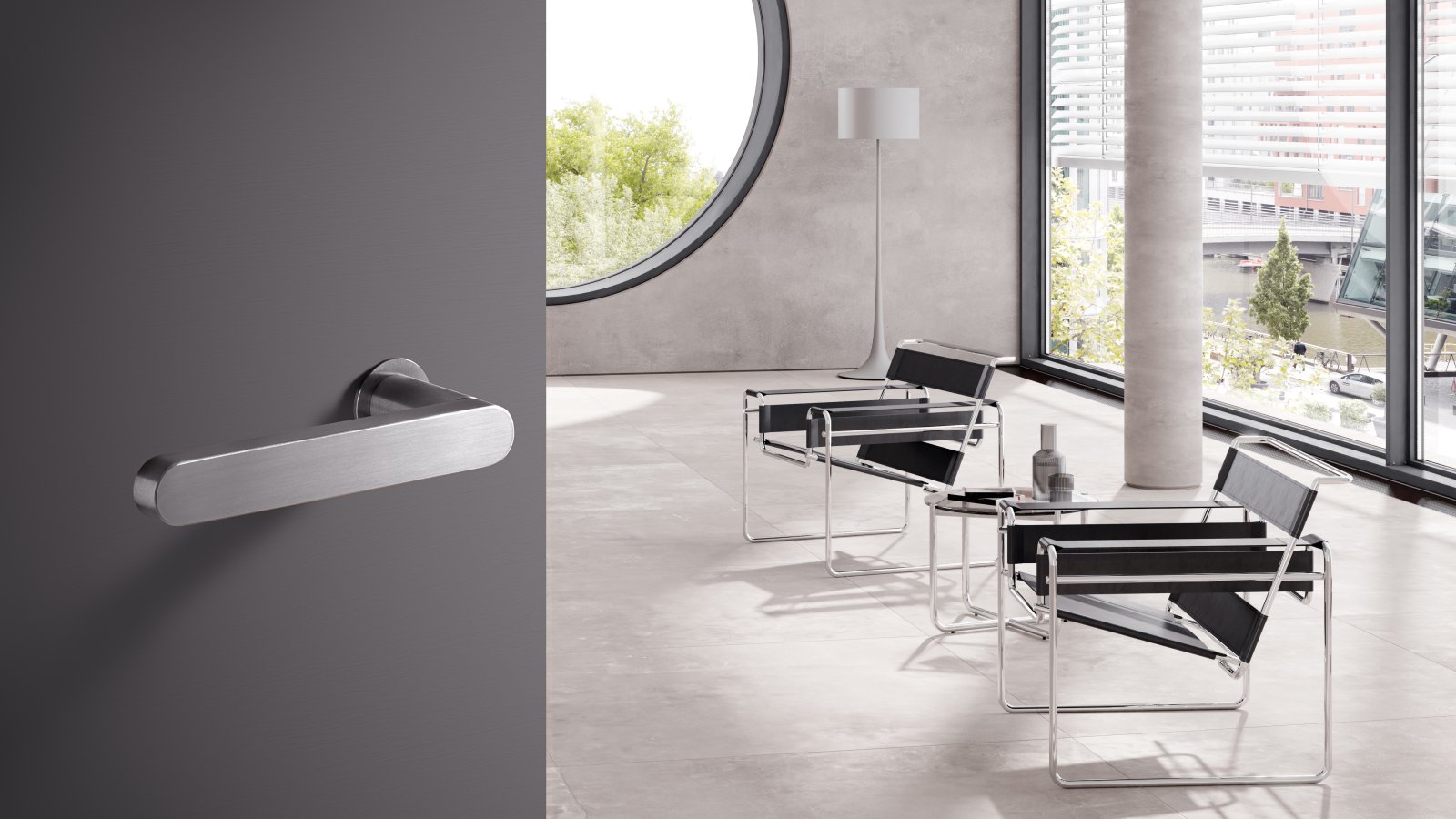
2. Polyamide
Polyamide has been one of the most important technical plastics since the 1950s. The granulate from which the products are made with the help of hollow moulds can be coloured in every shade imaginable. Polyamide fittings can be produced with matt or gloss surfaces.
Polyamide is hygienic, easy to clean, abrasion-resistant, antistatic and chemically resistant. Compared to metal surfaces, they are somewhat less durable because they’re sensitive to UV light and water vapour. On the other hand, they tend to be less expensive.
Polyamide in combination with deliberately selected colours and the clear, reduced-to-the-essentials design language of Bauhaus results in the timeless design of our door handle System 111.
The polyamide plastic represents the Bauhaus maxim that well-designed, industrially manufactured everyday products should take the place of the artistic one-off. Form and usability without any "frills" are the focus.
Learn how surfaces and door handle design increase hygiene at the door.
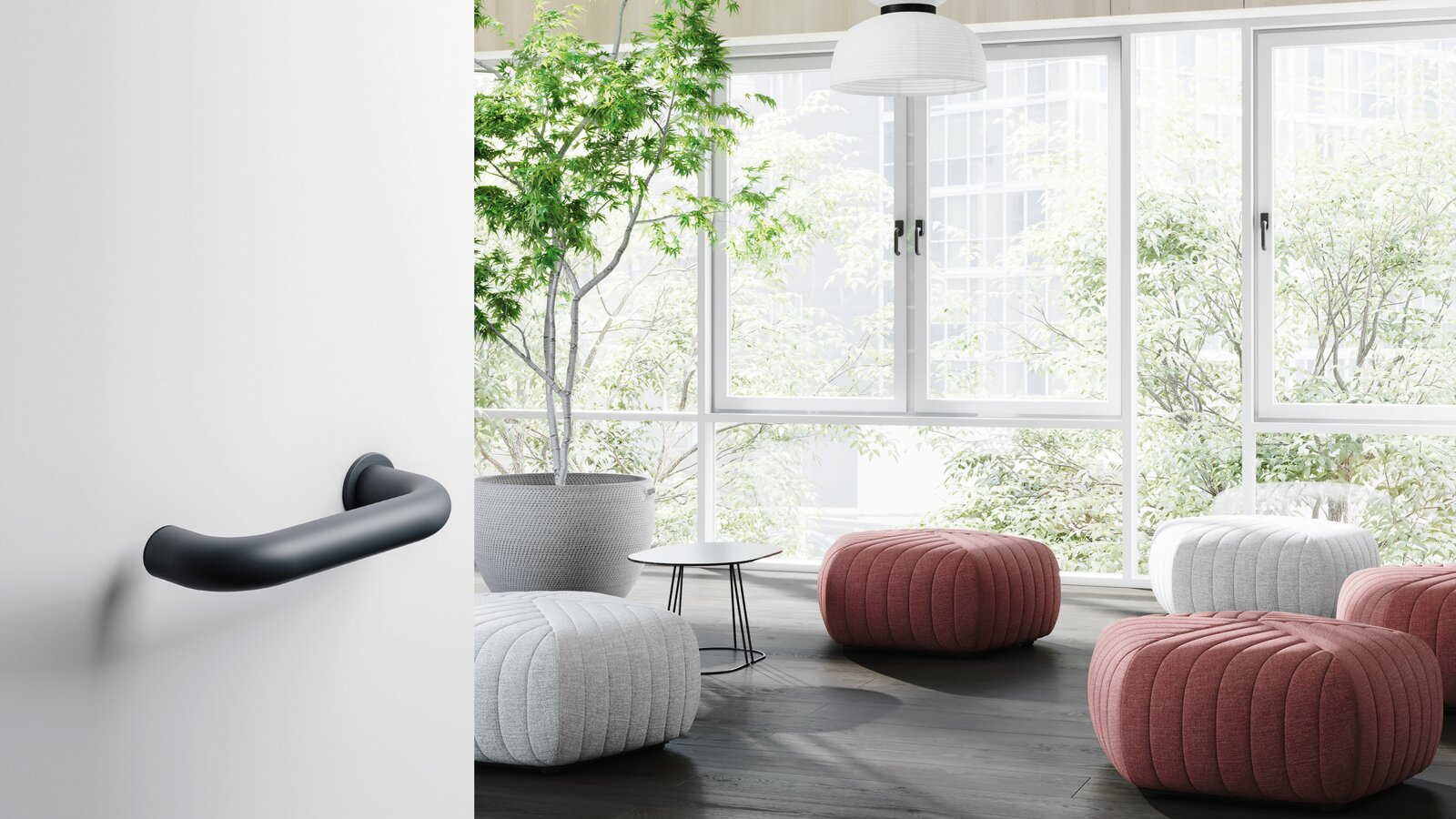
3. Matt
Polyamide with a matt surface, such as in HEWI series 162,has a particularly elegant effect. The matt surface is characterised by its particular look and special feel.
Door handles with a matt polyamide surface can blend seamlessly into a style of furnishing or create a deliberate counterpoint to high-gloss furniture surfaces. Matt polyamide door handles are also available in a wide range of different colours.
Discover matt surface design options from the door to the patient bathroom in the Clinic Dr. Decker.
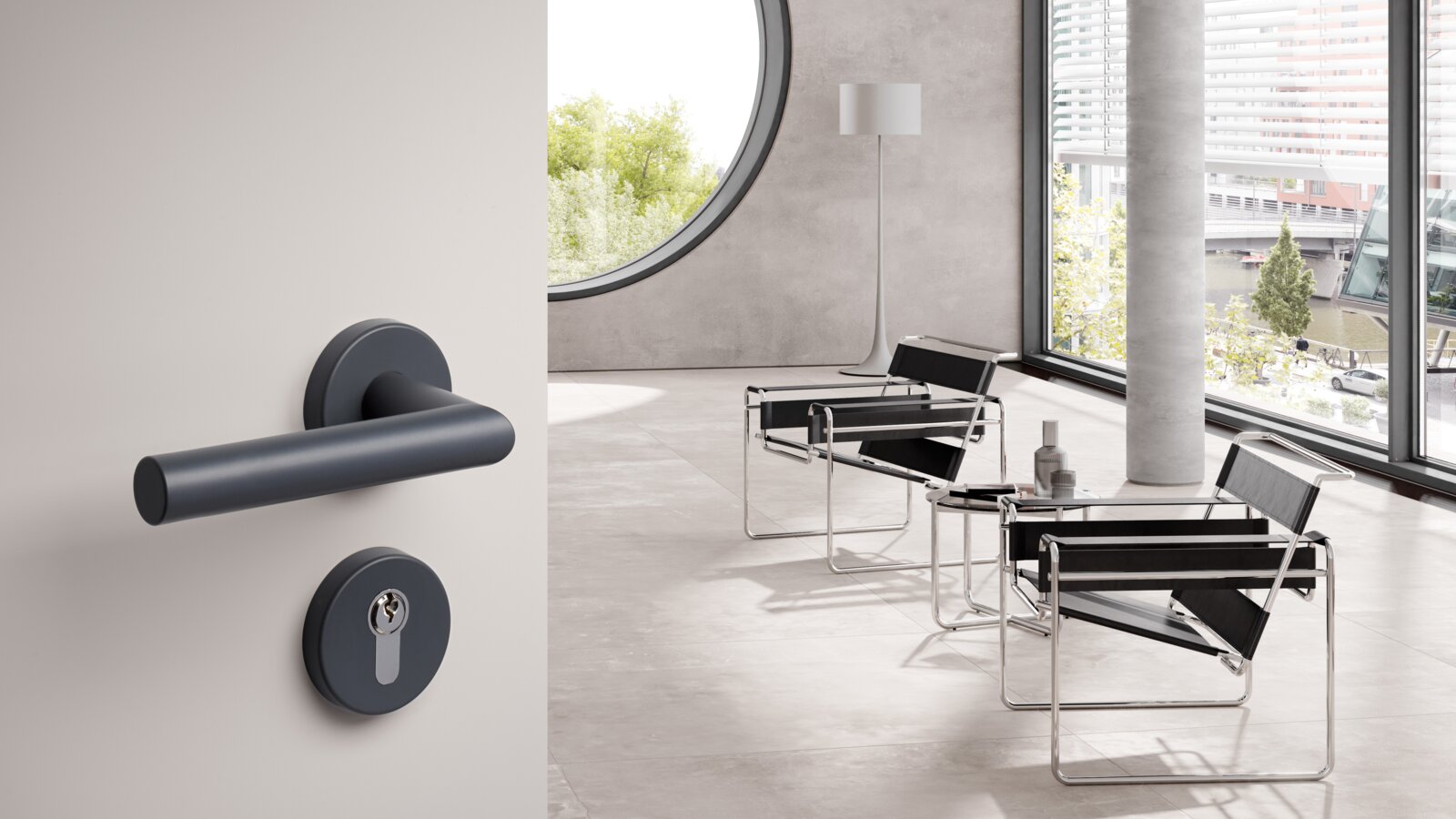
4. Glass door handles
Glass is a material seldom used for door handles. Which makes their use all the more exclusive wherever glass door handles appear. Glass lacquered on the back makes the lever handle a true design piece.
Different lacquer colours give the glass a unique shimmer. Door handle design in glass fits well in rooms with a clear design language that appear businesslike and sober, in locations like representative office spaces.
The feel depends on the surface structure. Satinised glass, for example, feels velvety soft. Crystalline surfaces, on the other hand, enhance the depth and smoothness of glass. The surface structure also has a visual effect. Decorative satin finishes can create patterns on clear glass or translucent recesses through which light falls without allowing the observer total transparency.
Glass and stainless steel make an exciting combination. The Range 180 door handle is made of solid stainless steel.Glass gives the design variant of the Range 180 a luxurious and imposing look.
The glass is applied directly to the stainless steel body so that it appears to float on the handle. The glass element refracts the light, creating a depth of feel. Coloured glass allows for a wide range of design options.
5. Wooden door handles
Wood is a natural product. This means, door handles made of wood or with wood components, require a little more care than other materials. Especially outdoors when they may be exposed to wind and weather. Wooden door handles should therefore be treated with a wood care product from time to time.
Those who choose wooden door handles usually appreciate the natural charm of wood as a material. This comes into its own particularly well when the wood is waxed and oiled. The result is an extremely attractive appearance and a very pleasant, warm feel. Door handles made of waxed and oiled wood are ideal for a country house style.
Wood can also be coated with varnish in every imaginable colour, which radically changes the appearance and feel of the handle. However, especially outdoors, the formation of cracks is somewhat likely, and cracks in lacquered wood are difficult to re-treat.
From an environmental point of view, door handles made of tropical woods should not be used. Domestic forests offer sufficient high-quality material for the production of wooden door handles.
Stay up to date
Stay up to date and discover new design options and solutions at the door with our newsletter.
